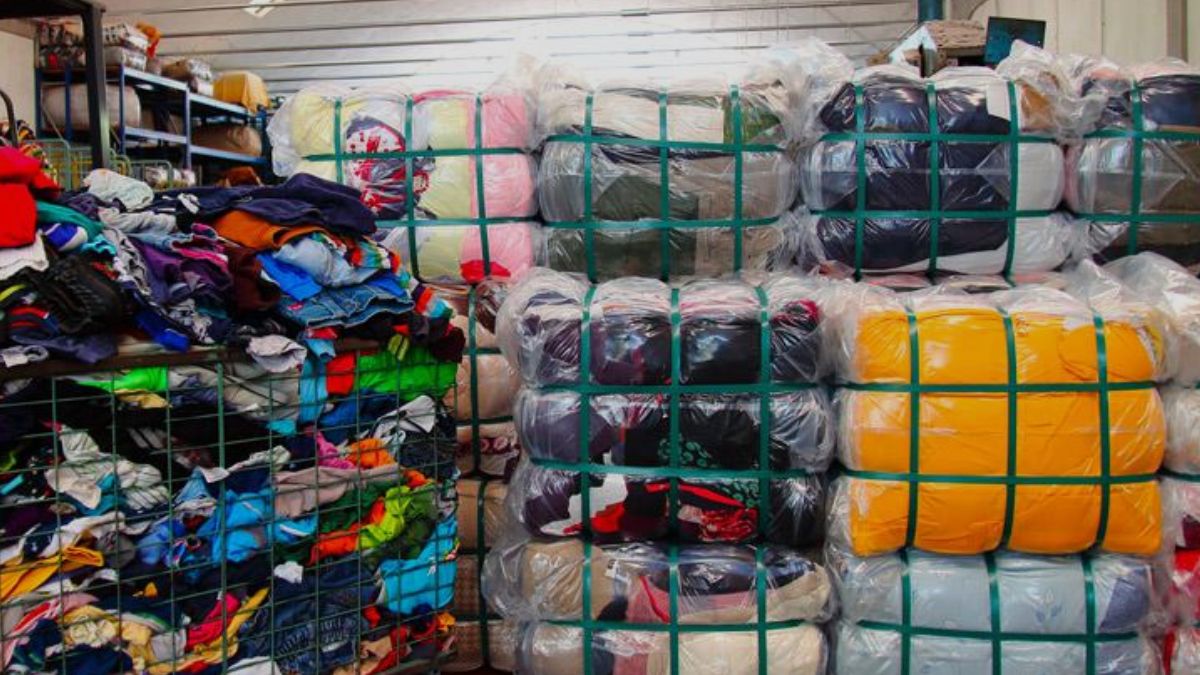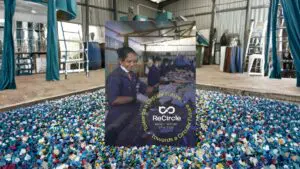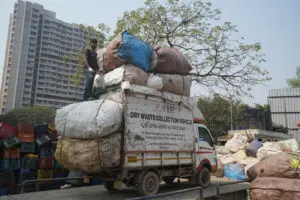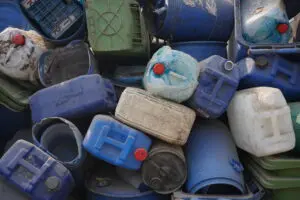The European Union (EU) has taken a decisive step towards making the textile industry more sustainable through the introduction of Extended Producer Responsibility (EPR) legislation for textiles. This new framework, set to take effect across EU member states by 2025, is designed to ensure that producers are held responsible for the entire lifecycle of their textile products from production to post-consumer waste.
While this law is currently applicable only in the European Union, its impact will be global. For India, one of the world’s largest textile producers and exporters, the EU’s EPR law sends a clear signal about where international regulations are heading.
Although India does not yet have a formal EPR system for textiles, the success of its Plastic Waste Management Rules (2016) demonstrates that similar frameworks are entirely possible in the near future. As the conversation around sustainability and circularity grows stronger, it is highly likely that India will soon develop its own textile EPR framework.
If you are an Indian textile manufacturer, exporter, or brand owner, now is the time to prepare. At ReCircle, one of the leading Textile Waste Management Companies In India, we help businesses transition towards circularity through traceable collection systems, verified recycling networks, and end-to-end compliance support.
What is Extended Producer Responsibility (EPR)?
Extended Producer Responsibility (EPR) is a mandatory environmental policy approach that holds producers, importers, brand owners, and in some cases, sellers responsible for the packaging they place on the market, even after it has been used and discarded. The principle encourages companies to design packaging that is more durable, recyclable, and generates less waste.
Under an EPR system, producers fund and manage the collection, segregation, and recycling of their products once consumers dispose of them. The objective is to shift the financial and operational responsibility for waste management from local authorities to those who produce and profit from the products in the first place.
India has already implemented EPR systems for plastics, electronics, and batteries, which have improved waste traceability and formalised recycling networks. The textile industry is expected to follow this path.
Inside the EU’s New EPR Legislation for Textiles
The EU’s new EPR regulation for textiles forms part of its Circular Economy Action Plan and EU Strategy for Sustainable and Circular Textiles, both of which aim to make the textile sector greener, fairer, and future-ready.
Here’s a breakdown of what this new law entails:
1. Mandatory Producer Responsibility
Every company that places textile products including clothing, footwear, and household textiles on the EU market must take financial and operational responsibility for their end-of-life management.
This includes:
- Collection of used textiles
- Sorting and recycling
- Funding waste management systems
- Reporting on volumes placed on the market and recovered
2. Eco-Modulation Fees
Producers will pay EPR fees based on how recyclable or sustainable their products are.
Textiles made from easily recyclable materials like cotton or polyester blends will attract lower fees than those made with complex, non-recyclable composites.
3. Separate Textile Collection (By 2025)
All EU member states must establish systems for the separate collection of textile waste. This means textiles can no longer be discarded with household waste.
4. Transparency and Traceability
Producers will need to report their waste management data accurately covering how much textile waste was collected, recycled, and reused.
Traceability will become a core compliance requirement.
5. Scope of Responsibility
The law applies not only to EU-based producers but also to foreign exporters and suppliers selling to EU markets.
That includes Indian textile manufacturers and fashion brands who export to Europe directly or through e-commerce platforms.
Failure to comply could mean losing access to one of India’s largest export destinations.
Why Indian Brands Should Care Now More Than Ever
India is among the world’s top textile exporters, sending billions of dollars’ worth of apparel, fabrics, and home textiles to Europe every year.
The EU’s EPR legislation means that Indian brands selling in the European market will now be expected to demonstrate compliance with EPR obligations whether directly or through their European retail partners.
This will affect:
- Export readiness Brands may need to prove recyclability or material traceability.
- Procurement and design Fabrics will need to meet sustainable design criteria.
- Reporting and labelling Detailed data on material composition and recyclability will be required.
In other words, compliance is no longer optional. It’s a market access condition.
And just as India implemented EPR for plastics in 2016, it’s only a matter of time before EPR for textiles becomes part of the country’s sustainability framework. Forward-looking brands that start preparing now will have a major advantage.
Lessons for India from the EU’s EPR Model
The EU’s approach offers several takeaways that can guide India’s own textile sustainability journey:
- Structured Accountability: Producers fund and manage end-of-life waste instead of municipalities bearing the cost.
- Data-Driven Compliance: Every kilogram of textile waste is accounted for.
- Circular Design: Products are designed to be reused or recycled.
- Consumer Education: Collection points and awareness programmes ensure better participation.
For India, adopting similar mechanisms could transform its textile industry not just environmentally, but economically. With the right infrastructure and partnerships, EPR could unlock new markets for recycled fibres, job creation in waste recovery, and a globally competitive green manufacturing ecosystem.
How to prepare an actionable roadmap for Indian brands
Below is a pragmatic, step-by-step readiness plan you can apply immediately.
1. Map your EU exposure
List all SKUs sold into the EU, routes to market (direct sales, wholesalers, marketplaces), and the legal entity considered “producer” in each case. This mapping shows where obligations may sit and with whom you must coordinate (distributors, fulfilment centres, marketplace operators).
2. Audit materials and design
Perform a materials audit of your range. Identify problematic blends (e.g. mixed fibres that are hard to recycle), components (metal trims, glued soles) and items suitable for reuse or mechanical/chemical recycling. This audit is the first step to reduced fees and better circularity.
3. Estimate potential EPR fees and costs
Use available national examples and public guidance to model ballpark EPR fees per kg or per SKU. Even though precise fees will depend on Member State decisions, early cost modelling helps you understand margin impacts and pricing adjustments. (Consultancies and specialised partners can help here.)
4. Decide your compliance route
Options typically include: (a) joining an existing PRO, (b) partnering with other brands to form a PRO, (c) engaging a compliance manager or consultancy that handles multi-country administration. If you sell via marketplaces, check marketplace policies. Many will require proof of compliance.
5. Build take-back and collection mechanisms
Establish or partner for in-store take-back, mail-back, or reverse logistics. For online-first brands, mail-back solutions integrated with e-commerce envelopes and clear consumer instructions work well. Ensure collection partners can provide the documentation you will need for reporting.
6. Tie up with recycling and sorting partners
Identify downstream partners, recyclers, sorters, repair/reuse organisations who can take collected textiles and deliver outcomes that meet Member State targets. This is where partnering with reliable Textile Waste Management Companies In India helps: many of these firms already do collection, sorting and export/commercial processing and can scale to meet EU-quality expectations.
7. Strengthen labelling, traceability and data systems
Implement product-level markers where possible (care labels that include fibre composition data), adopt ERP features to track shipments by market, and prepare to provide regular data on volumes placed on market and volumes collected/recycled.
8. Revisit branding and communication
Prepare marketing and consumer communications to explain take-back and repair options. Being proactive about your circular offerings reduces reputational risk and can turn compliance into a brand strength.
9. Train procurement and design teams
Procurement must prioritise input materials that are recyclable and trackable. Design teams should be briefed on how design choices influence future EPR fees and end-of-life outcomes.
10. Engage legal/compliance counsel
Finally, get legal help to interpret where liability lies (you vs. distributor), contractually allocate responsibilities, and ensure that your EU representations (agents, fulfilment partners) won’t expose you to unexpected obligations.
Practical checklist: quick wins you can do this month
- Run a SKU-level material breakdown across your top 100 selling products into the EU.
- Begin conversations with 2–3 textile waste management companies in India to scope take-back and recycling options.
- Update online store terms to capture who is the producer for EU sales.
- Add a “take-back” page explaining how customers can return items.
- Request sample contracts from PROs or compliance providers and start price benchmarking.
The commercial and reputational upside of getting ahead
Complying with EPR is not simply a cost: with the right approach, it can deliver measurable benefits.
- Design efficiency: EPR financial signals encourage simpler, lower-impact designs which often reduce production costs and returns.
- Customer loyalty: Offering repair and take-back improves lifetime value and brand trust.
- New revenue streams: Reuse, refurbishment and resale channels can create new margins.
- Market access resilience: Compliance positions you favourably with EU buyers, retailers and marketplaces that will prioritise compliant suppliers.
Where Indian firms can plug in: partners and capability needs
To operationalise EPR obligations, you’ll need a set of partners and capabilities:
- Compliance managers / legal counsel interpret the law and manage registrations and reporting.
- PROs / consortiums manage fee collection and systems at scale.
- Reverse logistics providers manage returns, take-back and transport to sorting facilities.
- Sorters and recyclers process collected textiles into reuse, mechanical fibre or chemical feedstocks.
- Traceability tech digital platforms to report placed-on-market volumes, collection rates and recycling outcomes.
- Local collection agents, community collection points, NGO partners, or collectors who can scale household collection.
Many Indian brands reduce complexity by contracting with firms that provide turn-key solutions from take-back logistics to recycling credits and paperwork.
How fees are likely to be calculated (what to expect)
Exact fee structures will vary by Member State, but expect fees to be influenced by:
- Weight: heavier products attract higher absolute fees.
- Material complexity: blended fibres and products with mixed materials attract higher fees.
- Recyclability: easily recyclable mono-materials may receive a lower fee.
- Durability / repairability: items designed for long life or repair may be incentivised.
- Policy levers: some states may add penalties for fast-fashion business models or VAT incentives for repair.
Proactively re-engineering product specifications can reduce the fee burden over time.
A note on exports and cross-border logistics
If you export finished products from India to an EU distribution centre, the EU importer or distributor may be designated as the producer in national law. Contractual clarity is essential: include clauses that specify which party will register for EPR, who will pay fees, and who will provide data for reporting. Failing to do so can create dual liabilities and disrupt sales.
How ReCircle Can Help You Stay Ahead
ReCircle is not just a service provider, we are your strategic EPR partner. Drawing from our proven experience managing plastic waste under India’s EPR framework, we offer end-to-end solutions tailored for textile producers and brands:
- EPR Consultation and Strategy Guidance to help you understand emerging EPR rules and align with international best practices.
- Verified Waste Recovery Networks Collection and recycling from credible, traceable sources across India.
- Digital Reporting Systems Data-driven tracking of waste recovery, recycling, and impact.
- Impact Measurement and Communication Reports that help brands communicate their sustainability efforts to buyers and regulators.
By working with ReCircle, your brand can stay compliant, transparent, and ready for future EPR requirements in India.
Prepare Today for a Sustainable Tomorrow
The EU’s EPR legislation for textiles marks a new era of producer accountability and circular design. For Indian textile brands, it offers both a challenge and an opportunity to get ahead of the curve and establish systems before regulations make them mandatory.
India may not have textile EPR legislation yet, but the shift towards sustainability is inevitable. Forward-thinking brands that start building circular waste management systems today will lead tomorrow’s markets.
At ReCircle, we make that transformation seamless from collection to recycling, from waste tracking to impact reporting. Whether you’re exporting to Europe or preparing for India’s future EPR policies, we’re here to help you every step of the way.
FAQs
Q: If I’m based in India but sell into the EU via marketplaces, do I need to comply?
A: Very likely yes. Many EU and national schemes clarify that the “producer” may include non-EU sellers who place products on the EU market, or the importer/distributor could be treated as the producer. Marketplaces are increasingly requiring proof of compliance. Start by clarifying your legal status in each route to market.
Q: Will small brands be exempt?
A: Some schemes provide transitional arrangements or scaled fees for micro and small enterprises, but blanket exemptions are rare. Planning early reduces surprises.
Q: Do I have to change my product design now?
A: Not overnight but prioritise design changes for new collections and high-volume SKUs. Durable, mono-fibre designs and modular components reduce future fees and ease recycling.
Q: Are there enough recyclers in India to deliver EU-grade outcomes?
A: India has a growing ecosystem of collection and sorting and an established second-hand export market. However, EU schemes increasingly emphasise verified recycling outputs and traceability. Partnering with certified recycling partners and service providers that can demonstrate output quality and chain-of-custody will be crucial. Engaging local Textile Waste Management Companies In India that already understand international standards is often the best first step.




